MBTI Mania
How Four Letters Are Taking Over Chinese Social Media
On Xiaohongshu, a soft melody sets the tone for a young woman’s weekend. In her vlog titled “infp 周末独处vlog |慢下来 过自己的小世界” (“INFP Weekend Alone Vlog|Slow Down and Live Your Own Little World”), she captures a day of quiet solitude: waking up naturally, strolling through a vegetable market, cooking a simple meal, lighting a candle, weaving, and curling up with a book. Her captions reinforce the mood: “和自己对话. 享受属于自己的当下.” (“Talk to myself. Enjoying my own presence.”) Hashtags like #治愈 (healing), #独处 (alone), and #infp精神世界 (INFP spiritual world) frame her day as a reflection of her personality. The comments pour in, with viewers relating to her quiet, “soft” lifestyle and sharing how they see themselves reflected in her INFP experience.
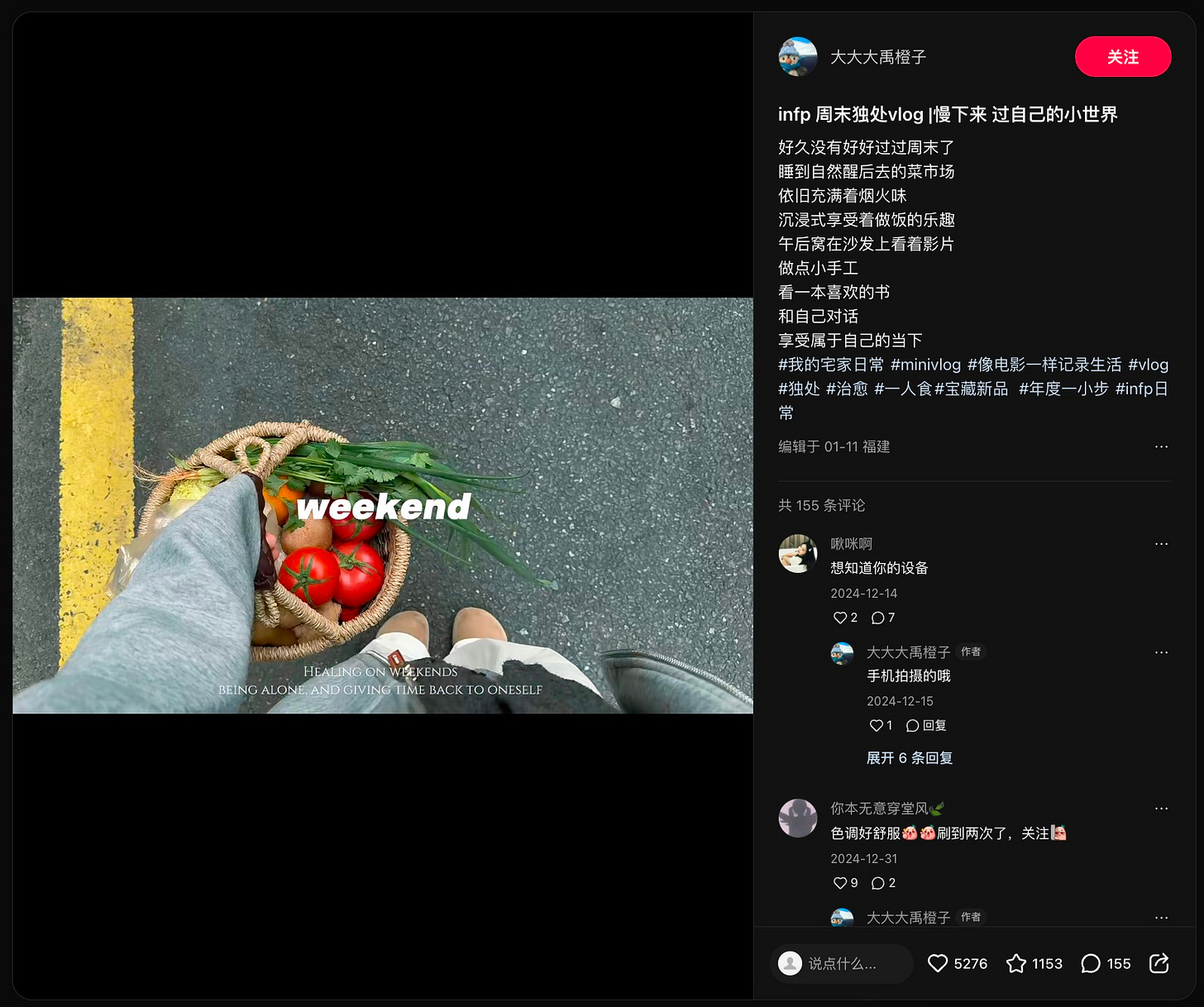
Across Xiaohongshu and Douyin, such vlogs are part of a larger trend surrounding MBTI, short for the Myers-Briggs Type Indicator. Originally developed in the West as a personality classification system, MBTI categorizes individuals into one of 16 personality types based on tendencies in four dichotomies: introversion versus extroversion, intuition versus sensing, thinking versus feeling, and judging versus perceiving. While often criticized for its scientific validity, MBTI has gained immense popularity as a framework for self-discovery. In China, it has transformed into more than just a tool for introspection–it has become a cultural phenomenon and something deeply embedded in Chinese social media. For young people straddling the tension between globalization and traditional values, these four letters offer a way to articulate individuality, explore identity, and connect with others. On these platforms, MBTI isn’t just a tool for self-reflection; it’s a way of storytelling, a badge of identity, and a lens through which to navigate the complexities of modern life.
The meteoric rise of MBTI in China is rooted in the country’s long history of using systems to understand identity and relationships. For centuries, systems like the Chinese Zodiac, a twelve-year cycle that aligns personality traits with animal signs, and the Five Elements, which links individual characteristics to wood, fire, earth, metal, and water, have guided people in understanding themselves and their roles within the universe. These frameworks emphasize balance and relationships, centering not just on who you are but on how you fit into a family, community, or even the cosmos. MBTI, with its tidy combination of four letters, offers a modern, globalized counterpart to these traditions–scientific in appearance yet deeply personal, allowing individuals to celebrate their uniqueness while staying connected to collective values.
This delicate balance is reflected in the way MBTI content is both created and consumed. Directly saying, “I’m creative and empathetic” may feel self-centered in a culture that values humility and modesty. But saying “I’m an INFP” offers a socially acceptable shorthand–a way to express one’s individuality while staying within the bounds of cultural norms. Posts like “一分钟导演 | 记录infp碎碎念✨我们与完美” (“One-Minute Director | Recording INFP Random Thoughts ✨ Us and 'Perfection'”) capture this nuance. The creator shares a personal struggle with perfectionism through an artistic, aesthetically pleasing video, reflecting: “先完成,再完美。这句话打破了我的内耗...” (“Completion is more important than perfection. This saying helped me overcome my inner struggle…”). By framing her self-expression within the INFP identity, she connects with viewers who resonate with her vulnerability and see their own challenges reflected in her story.
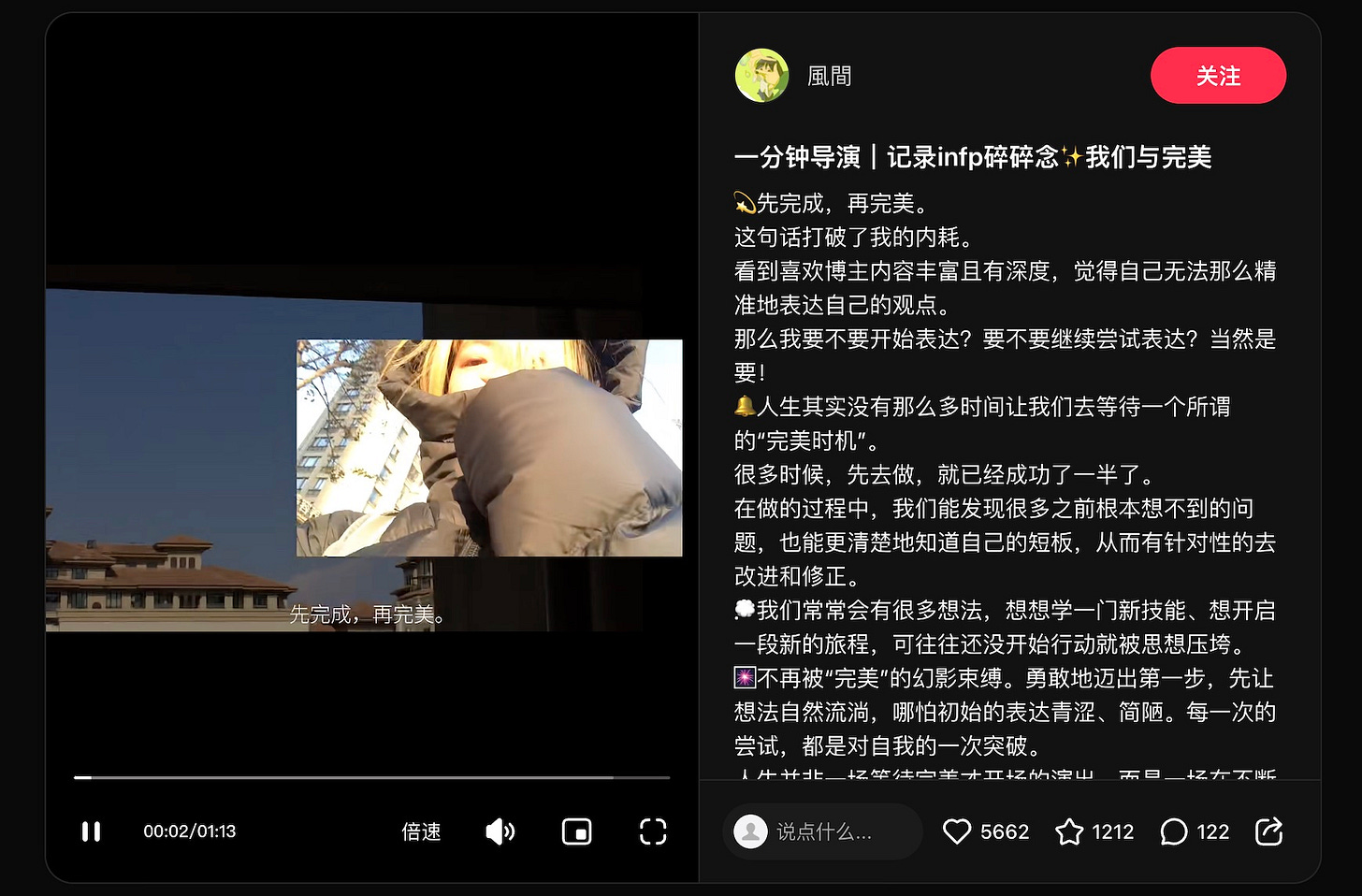
On social media, MBTI provides a ready-made framework for influencers to shape their personal brands. These personality archetypes practically write themselves: the dreamy INFP, the disciplined INTJ, the pragmatic ESTJ, the warm ESFP. A teacher leans into her ESFP energy with a vlog filled with memes and pop culture references, while an ENTJ content creator, juggling an internship and studying abroad, highlights her productivity and structured routines. By aligning their content with their MBTI type, influencers create a sense of authenticity and consistency, making their videos more engaging and instantly recognizable to their audience.
MBTI thrives in today’s algorithm-driven digital landscape, where personality-based hashtags like #infp日常 (#INFPDaily), #infp在想什么(#INFPThoughts), #超典型esfp的一天 (#ATypicalESFPDay). #p人 (#PPeople), or simply the four-letter MBTI code help content go viral among niche, dedicated audiences. Unlike interest-specific tags like #FitnessTok or #Cottagecore, MBTI hashtags tap into something more universal–an individual’s sense of self. They create an emotional connection that goes beyond hobbies or aesthetics, appealing directly to viewers’ personal identities.
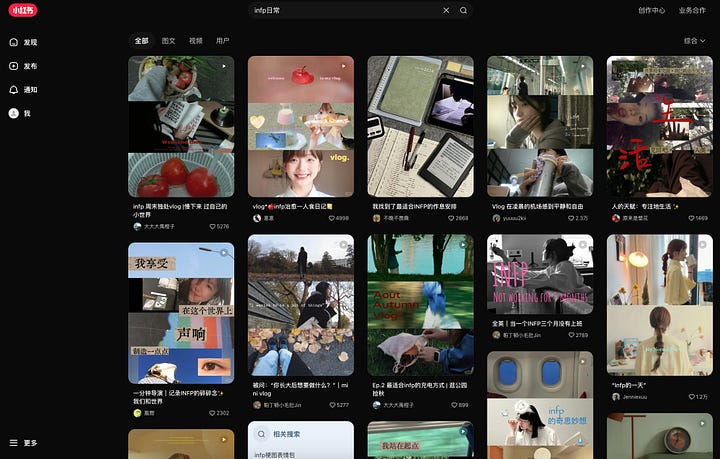
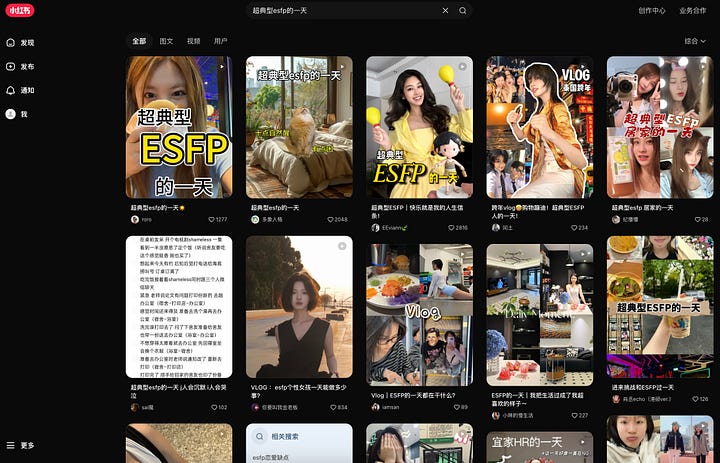
For many viewers, MBTI content is more than entertainment–it’s a form of validation. MBTI offers a way to navigate the delicate balance between individuality and collectivism, a struggle especially relevant to younger generations in China. Urbanization and globalization have sparked a desire for personal identity, yet traditional values of family, harmony, and social roles remain ingrained. Saying “I’m an ISFP” or “I’m an ENTP” becomes a bridge–allowing individuals to assert their uniqueness while fostering a sense of belonging through shared personality traits.
MBTI’s influence extends beyond self-expression–it underscores the growing pressures young people face in navigating the tension between self-discovery and societal expectations. As individuals seek connection and validation through personality types, they also encounter the real-world consequences of these labels, particularly in professional settings. Recruiters are increasingly incorporating MBTI into hiring practices, explicitly seeking “E” leaders or requiring candidates to take the test to gauge their fit for certain roles. In industries like law, specific types–such as INTP, ISTJ, ENFP, and INFJ–are prioritized. One candidate, applying for an e-commerce position, had their interview canceled after taking the MBTI test, without ever seeing their results–just knowing that they were likely an “I.” Feeling scammed, they were far from alone–many others have shared similar experiences, confirming that companies are using MBTI results as a filtering tool. One commenter, an INTP, confessed to adjusting their personality type to ENTJ or ESTJ just to avoid being screened out.
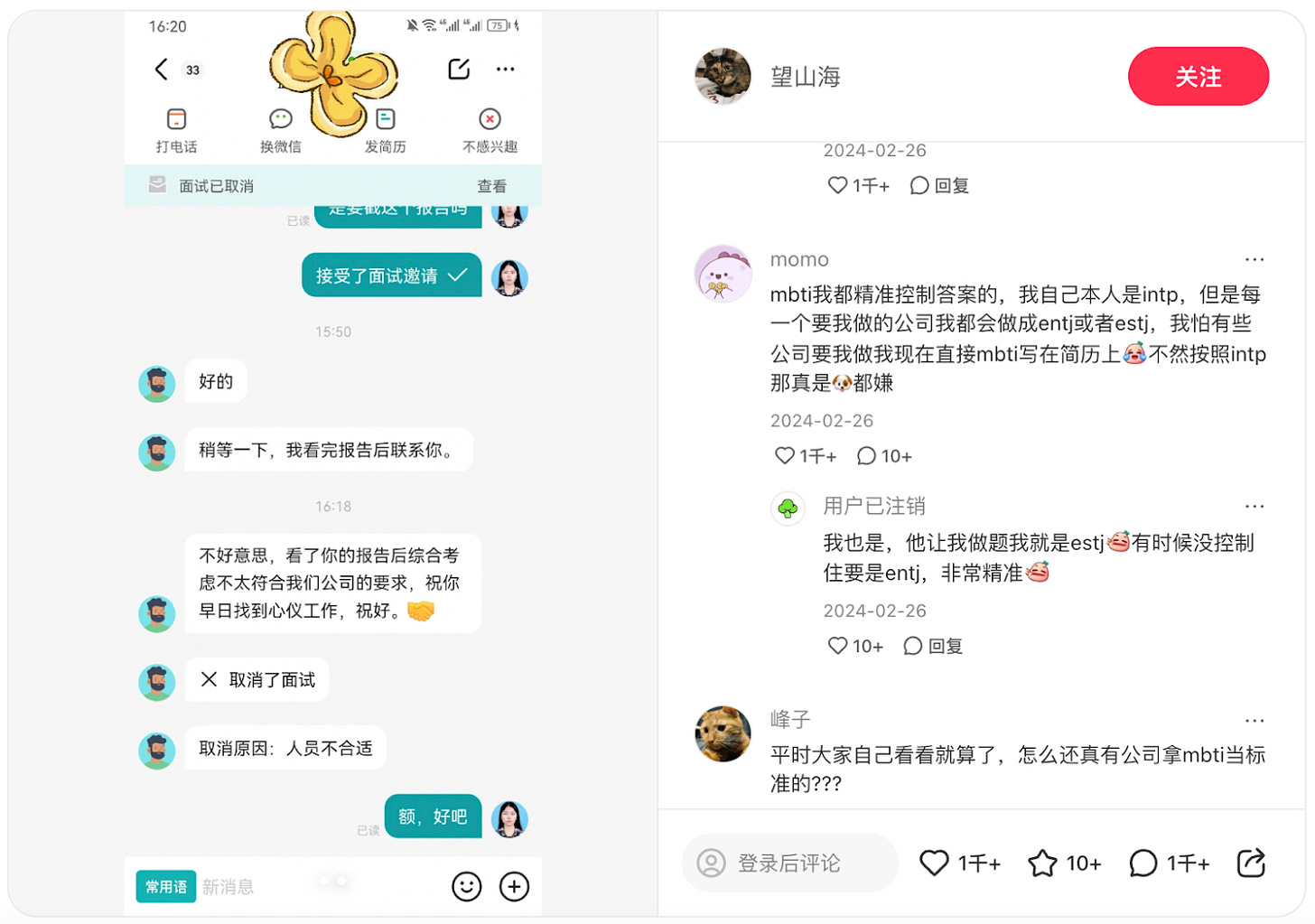
In this context, MBTI-framed vlogs gain new significance. They become more than a reflection of individuality; they serve as a strategy for navigating the modern world. These vlogs offer viewers a chance to embrace their personality while also optimizing it for success in society. Influencers aren’t simply documenting their lives–they’re providing a playbook for thriving in the face of societal pressures. Some share subtle insights through everyday moments, while others offer clear-cut guides on how to leverage MBTI traits to excel socially and professionally. For example, while INFPs aren’t typically seen as natural leaders, one freelancer demonstrates how passion and purpose can foster leadership, balancing three jobs in a single day. Meanwhile, an ENTJ shares a regimented morning routine, where by 8 a.m., she has already completed household chores and exercised, earning praise for her productivity. These vlogs turn MBTI into much more than a tool for self-discovery–they transform it into a roadmap for navigating the demands of modern society.
However, MBTI’s rise also brings its share of challenges. As the system becomes commodified, there’s a danger that people may feel pressured to conform to an idealized version of their personality type–or even adopt a different one altogether to meet external expectations. Instead of celebrating the complexity of individual identities, MBTI could become a limiting framework, encouraging people to fit themselves into predefined boxes.
Yet, despite these concerns, MBTI’s appeal endures. For many, it acts as both a mirror and a map, offering clarity in an increasingly complex world. On Xiaohongshu, these four letters are woven into vlogs, captions, and reflections, creating a narrative language that is as personal as it is universal.
Ultimately, MBTI’s popularity lies in its capacity to connect. A quiet INFP’s weekend vlog, an ENTJ’s time-management tips, or an ISFP’s aesthetic moments–these glimpses into individual lives feel both unique and deeply relatable. For a generation caught between tradition and modernity, MBTI provides a way to navigate the messiness of identity, one post at a time.


